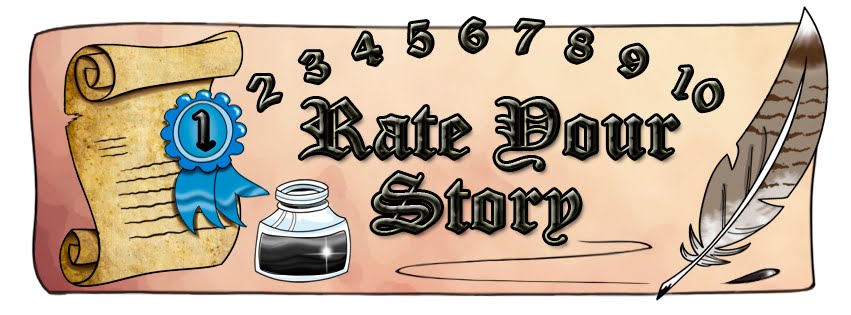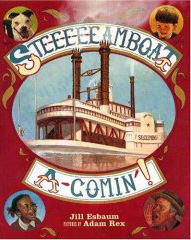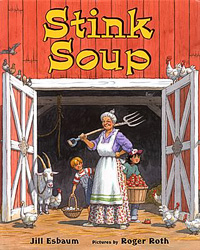It’s Author Interview Wednesday
once again! Where does the time go, I
wonder. For me, I’ve been trekking
across Gambia
and the whole experience has been a bit surreal – and, at times, a bit like
fantasy and sci-fi. Which brings me to
today’s interview with the amazingly talented, creative, and prolific writer…
…author Anne E. Johnson!
Anne E.
Johnson has published many types of writing. Her non-fiction works include
feature articles about music for the New York Times and children's
books for the Rosen Group. Her more than twenty short stories have
appeared in Shelter of Daylight,
Underneath the Juniper Tree, Spaceports
& Spidersilk, and elsewhere. She has three novels contracted
for publication in 2012. Anne lives in Brooklyn
with her husband, playwright Ken Munch.
Miranda: Thanks for joining us Anne! You've got some impressive degrees, plus you study the craft of writing quite a bit. How important do you think it is for writers to have a solid foundation in writing? Is experience the best teacher or do you think classes are necessary?
Anne: I can think of
three things more essential to becoming a good writer than taking writing
classes:
The first is to develop a reading habit. Whatever type of
fiction you think you want to write, that's what you should be reading the
most, so you know what's been done, and you know the history of the genre. Read
every day, and read widely. Don't just read new things. Read the
classics.
The second is to take a class or two about literature. Learn
to analyze it. Learn what makes a great story arc, great characterization,
great rhythm in language. Yes, this is supposed to be taught in a writing
class, but in my experience the way to learn it is by puzzling out how the
masters do it.
The third step---after you have a reading habit and are
getting some critical skills to apply to your reading---is to start writing.
Write, write, write. And be very self-critical. This does NOT mean to hate
everything you do, but to be open to improving everything you do, and to
analyze it in the same way you would classic literature.
Miranda: Good points. Now, I happen to have been following your blog and notice you also write very quickly. Tell us what happens after you write. Do you have a critique group? Editor? Self-Edit?
Anne: First I do at
least two rounds of self-edits. Then I send the manuscript to my beta readers.
This is a set of five or six people who consistently read my work at this
stage. They don't meet together as a group to discuss the manuscript, but read
it and comment on it individually. The advantage of this approach is that I get
five or six distinct perspectives, not influenced by each other. And the
comments often conflict, which can be frustrating, but is ultimately quite
valuable.
Miranda: I hear you on the valuable but frustrating part. Thanks for sharing a bit about your process. Now, let’s talk about content. You write a lot including subjects you're passionate about. How important is it to "write what you know?"
Anne: I think that
including subjects you're passionate about as flavoring and setting is
completely different from "writing what you know," a concept that
doesn't work for me at all as a fiction author. Fiction, for me, is about
imagination. As a writer, I would feel very constricted if I limited my main
characters' experiences to my own. Where would I draw the line? No male
characters, just because I'm female? No characters of color, because I'm white?
No uneducated characters, just because I went to grad school? No characters
older than myself?
Miranda: Great distinctions! Perhaps we can also talk about reading and researching – which I know is often essential for both fiction and nonfiction authors. Explain how important those elements factor in to successful writing.
Anne: I've already
mentioned my feelings about reading in general. If you're writing historical
fiction, good research skills are central to your job. And don't just Google
your topic! Get yourself to a brick-and-mortar research library. Let a
librarian help you if you don't know where to begin. Use the work of academic
scholars to expand your knowledge of the chosen time and place in a really
profound way. Once you feel like you know what that world was like, only then
should you even begin plotting.
One of the tricks of historical fiction is to have done so
much research that your research doesn't show. The world should just flow out
naturally. Once I saw the line "She ran toward him in a dress dyed with
beet coloring and probably made of flax." Those unnecessary details about
the dress derailed the energy of the narrative and made me picture the author
reading a Wikipedia page. It's fine to sneak in interesting historical facts,
but the key word is "sneak."
Miranda: Sneak! Great technical term for it. I think we all get what you mean. Now, written stories aside, let's talk about your life stories. You've got some interesting ones. Tell us five things about yourself most Rate Your Story readers might not know.
Anne:
1. In high school, my friend Mary and I won an award for our
dramatic reading of the scene from The Hobbit in which Bilbo
Baggins meets Golem. I played Golem.
2. From age 14 to 21, I sang Irish and Scottish folk music
professionally, accompanying myself on guitar.
3. My favorite movie is City of Lost Children.
4. I discovered Robert Heinlein's novels when I was a teen,
and I've been a science fiction fan ever since.
5. Last year, during a trip to Los
Angeles, my husband and I visited the Grammy Museum.
The top floor is an overview of all the many genres that have contributed to
American music. I stood in the middle of that exhibit and wept because I was so
proud to be part of this species that could create so much beauty to express
themselves.
Miranda: All right, let's get to your books. Congrats on all your recent successes! Can you share with us the titles and release dates of the books and where they are/will be available?
Anne:
On June 1, my tween paranormal mystery novel, Ebenezer's
Locker, will be released as an e-book from MuseItUp Publishing.
On June 19, my noir-inspired science fiction novel (for
adults), Green Light Delivery, will be published by Candlemark &
Gleam.
In July, my tween medieval mystery novel, Trouble at the
Scriptorium, will be published by Royal Fireworks Press.
You can read synopses of all of these works, plus see other
news about my writing and appearances, by visiting my website.
Miranda: Thanks so much! Now…the hardest question of all. Do you think you can find a way to finish off this interview with an awesome ending for our aspiring writers?
Anne: Every person is different, but my own experience has
shown me this about being a writer: If you have stories to tell, then write
them. Don't expect writing well to be easy. But you can be sure that, the
harder you work on your writing, the greater the joy it will bring to both you
and your readers.
Miranda: Thanks,
Anne. I am sure that our Rate Your Story
readers will be sure to check out your website.
Thanks for visiting. Comments are OPEN below if you'd like to thank Anne or if you have a question to ask. See you all next week when I'll be posting the interview with Kelly Hashway from Casablanca, Morocco (on World Read Aloud Day!).











